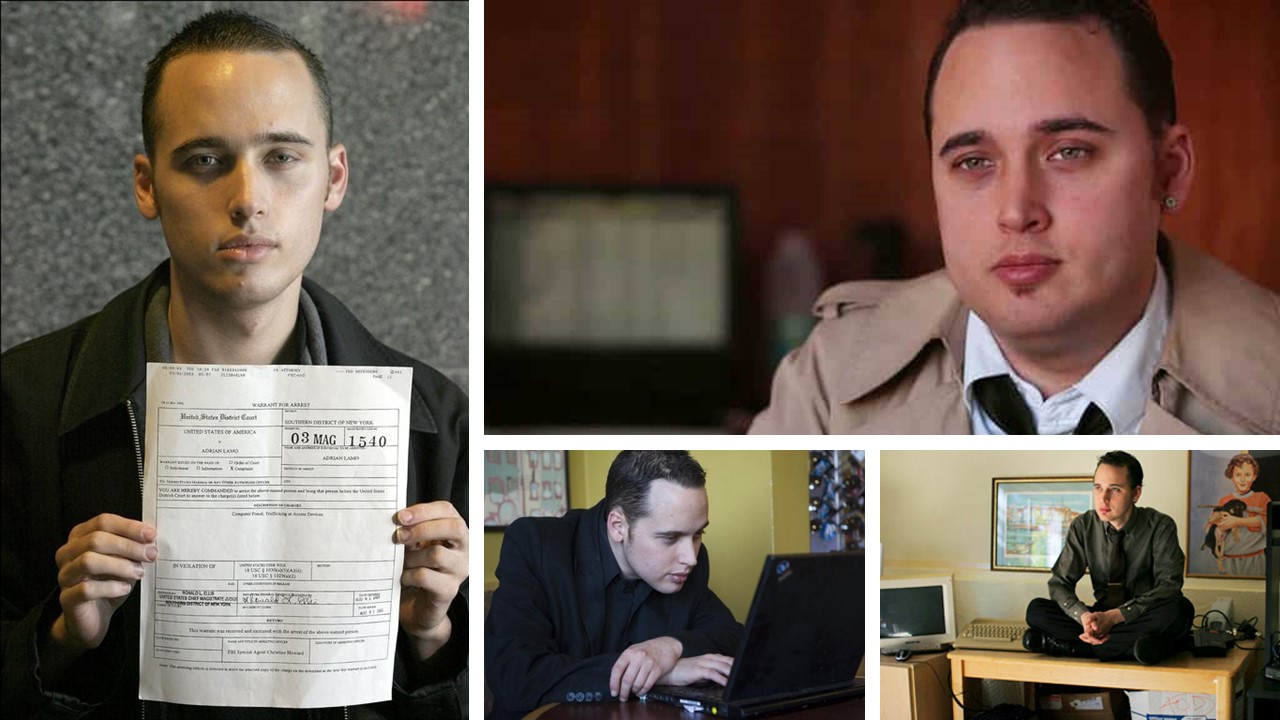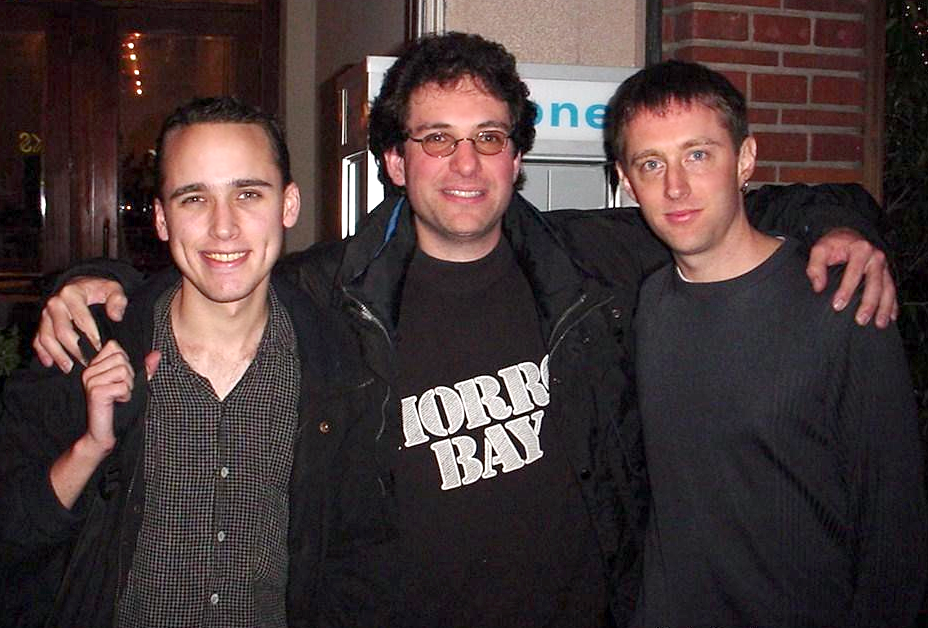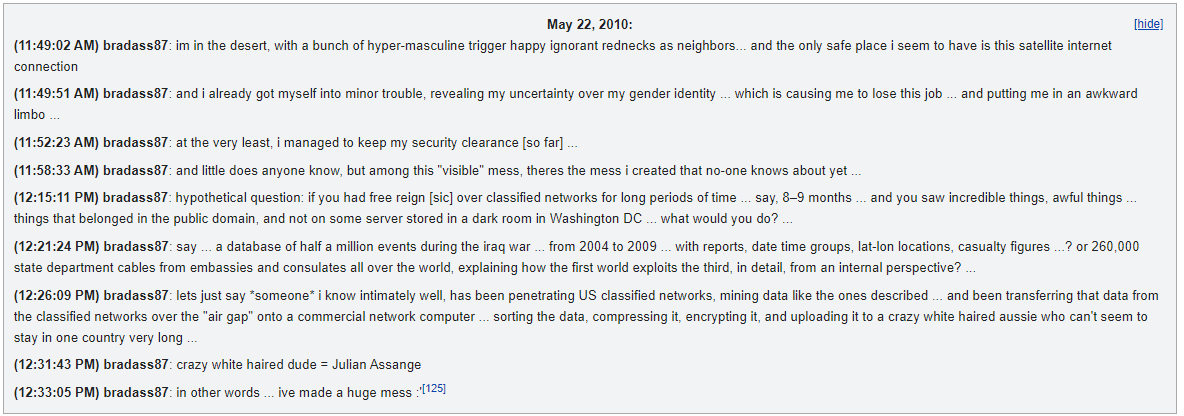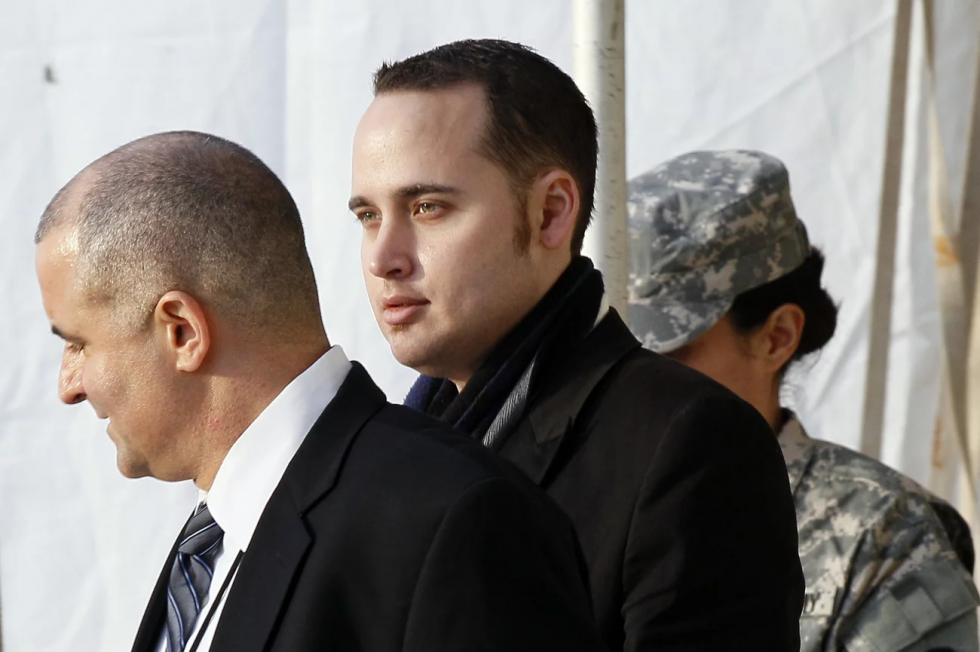
Adrian Lamo was a hacker who found new ways to breach companies and make them realize how insecure they were.
From his early hacks to hacking into prestigious companies while wandering around with his backpack to being called a “spy” by the hacker community, Adrian has been a controversial but highly interesting figure in the hacking world.
Adrián Alfonso Lamo Atwood was born in Malden, Massachusetts, USA, on February 20, 1981.
He attended high school in San Francisco, but dropped out after many arguments with his teachers. He didn’t graduate but studied journalism at American River College in Carmichael, California.
His computer skills were mostly self-taught. In fact, Adrian got his first computer, a Commodore 64, at a young age. He later became interested in and familiarized himself with software hacking, experimenting with the programming used to create the video games he loved to play.
His hacking journey began with hacking computer games, creating viruses on floppy disks, and eventually practicing phone phreaking. He was able to make free long-distance calls by tapping into strangers’ phone lines and finding ways to spoof his calls from phone companies to go undetected.
In the mid-1990s, he began using a simple web browser to explore the web and find security flaws in companies.
He was unknowingly driven by the so-called “hacker culture,” where individuals enjoy the intellectual challenge of overcoming the limitations of systems, using their ingenuity, artistry, and creativity to achieve their individual goals. It didn’t matter how big the companies were or how sensitive the information they contained, but rather what mattered was finding something that had never been found before.
He described corporate security at the time as a disaster, saying it wasn’t that difficult to find security holes and break into networks. He began exploring the Web by spending countless hours at the San Francisco Public Library, using their Internet terminals and telnetting to other systems, including those that allowed him to use their modems to make outgoing calls.
In 1997, Adrian watched the explosion of Internet business with a mixture of excitement and concern, especially about the dangers that no one could see but that to him were real and concrete.
He lived as a vagabond for two years, carrying his backpack and trusty laptop, traveling the length and breadth of the country on buses, sleeping in abandoned buildings and on friends’ couches while connecting to the Internet from university libraries and Kinko’s laptop stations.
During this time, he was sleeping in an abandoned building under the Ben Franklin Bridge in Philadelphia when he discovered security vulnerabilities in Excite@Home. He immediately alerted management of the flaws, but no action was initially taken.
His first ISP was AOL, and he was curious to know what went on behind the scenes. He was so obsessed with understanding how a major ISP worked that he found vulnerabilities and gained access to the network.
He rose to fame as a teenager in the early 2000s after a series of attacks on major corporations because he wanted to prove that if someone like Andrian Lamo, who was borrowing internet from a local Kinko’s, could break into companies like AOL, Yahoo, Microsoft, and even the New York Times with such ease, anyone could.
He searched for misconfigured proxy servers and managed to bypass corporate firewalls. He accessed an unprotected CMS tool on Yahoo’s news site and tried to alert the company, just as he had with other vulnerabilities he had found in other companies’ infrastructures, but no one paid attention.
He then thought the only way to raise awareness and solve these problems was to go to the press and get the story out. He went to Reuters, and once it was published, things quickly heated up.

Adrian Lamo (left) and Kevin Poulsen of Wired (right) in 2001
In 2002, he managed to penetrate the internal network of the well-known newspaper The New York Times, but this time he decided to have a little fun. He managed to gain access as a system administrator and gained access to a database containing the details of over 3,000 of the paper’s contributors. He then added himself to the internal database as an expert on the paper, specifically as a “hacking expert.”
Upon learning of the hack, the Times immediately contacted the FBI to begin an investigation. In 2003, the FBI issued an arrest warrant for Adrian, who pleaded guilty in 2004, resulting in a fine and six months of house arrest, followed by two years of supervised release. But he knew that even afterward, federal authorities were constantly monitoring him.
In 2010, Lamo joined the growing list of computer hackers diagnosed with Asperger’s syndrome, including Gary McKinnon and Albert Gonzalez.
Typically, this diagnosis comes when the hacker first faces criminal justice, rather than six years later, as in Lamo’s case. The article was written by journalist Kevin Poulsen, a former hacker himself and Wired journalist.
Chelsea Manning was a former American soldier (formerly Bradley Manning) and a known activist and whistleblower. In 2010, Chelsea, who was in Baghdad at the time, was already awaiting discharge for “adjustment disorder” (gender identity disorder) because she expressed uncertain feelings about her (then) gender identity, causing her to lose her job as a soldier.
She contacted Adrian on May 20, 2010, via encrypted email because she was already aware of his hacking incidents in the 2000s. She felt isolated and vulnerable and thought Adrian was someone who could understand her situation.
In a series of AOL chats between May 21 and 25, Chelsea, using the handle bradass87, and presenting herself as an Army intelligence officer, without waiting for a response, alluded to Adrian about the leaks, telling him they were classified material.
He then referred to a version of the Wikipedia article on WikiLeaks and indicated that some of the sections on the leaked video of the Baghdad airstrike were also his.


Chat series between Adrian and Chelsea
Chelsea began assisting and providing WikiLeaks with leaked stories/content in late 2009 when she found herself involved in something she was completely opposed to. She leaked a variety of materials, including videos of airstrikes in Baghdad, Afghanistan, thousands of US diplomatic cables (the cables contained diplomatic analyses from world leaders and assessments by host country diplomats and their officials), and half a million military reports, which later became known as the “Iraq War Logs” and the “Afghan War Diary.”
Chelsea was charged with several crimes, including violations of Sections 92 and 134 of the Uniform Code of Military Justice and the Espionage Act.

Adrian Lamo (center) leaves a courthouse at Fort Meade, Md., where Chelsea Manning’s court-martial was held, Dec. 20, 2011.
Adrian was subsequently widely criticized by the hacker community, such as at the “Hackers on Planet Earth” conference in 2010, who labeled him a “spy.”
Later in early 2011, Adrian was placed under protective custody as it was claimed his “life was in danger” after he handed over Manning, who was then incarcerated in the US military justice system and later sentenced to 35 years in prison.
However, President Barack Obama commuted the sentence to a total of seven years at the end of his presidential term.
She was first released from prison on May 17, 2017, but spent difficult years in and out of court where she was served multiple subpoenas to testify against WikiLeaks and Julian Assange, even though she repeatedly refused.
On March 11, 2020, she attempted suicide in the prison where she was being held, a couple of days before she was scheduled to appear before a judge on a motion to end her sanctions. She recovered well in the hospital, and the grand jury decided that her testimony was no longer necessary. The judge deemed her detention unnecessary and she was released.
He has received numerous awards over the years and has made numerous appearances on TV and at universities, giving interviews and speaking.
Adrian died unexpectedly on March 14, 2018, at the age of 37 in Kansas.
His death was made public by his father’s post on Facebook, which wrote:
It is with great sadness and a broken heart that I must inform all of Adrian’s friends and acquaintances that he has passed away. A brilliant mind and a compassionate soul are gone; he was my beloved son.
Several pill bottles were found in his home, and medical examiner Scott Kipper, who performed Adrian’s autopsy, explained that homicide couldn’t even be ruled out. He highlighted several irregularities in Lamo’s case, such as a sticker found on Adrian’s left thigh that read, “Adrian Lamo, Assistant Director, ProjectVigilant, 70 Bates Street, NW, Washington, DC.”
After three months, the Sedwick County Regional Forensic Report showed no definitive cause of death, despite a full autopsy.
A long list of chemicals were found in Lamo’s blood, including Benadryl, chlorpheniramine, citalopram, gabapentin, clonazepam, etizolam, flubromazepam, and some of them were benzodiazepines prescribed by his doctor to treat his anxiety disorder.
However, according to the medical examiners, those drugs weren’t enough to kill Adrian. The cause of death was likely an overdose to quell his frantic anxiety. The most likely cause of Adrian’s death was that he unknowingly combined benzodiazepines with kratom, a recreational drug.
The FDA issued a medical advisory just a month before Adrian died warning against mixing benzodiazepines with kratom, a combination that had been linked to dozens of deaths.
Adrian Lamo was the kind of hacker who wanted to challenge others by finding new ways to convince companies to take cybersecurity seriously. His role was to find new and unconventional ways to access networks and overcome invisible barriers.
He will forever remain a highly unsavory character and a controversial figure in the hacker community.
Follow us on Google News to receive daily updates on cybersecurity. Contact us if you would like to report news, insights or content for publication.
